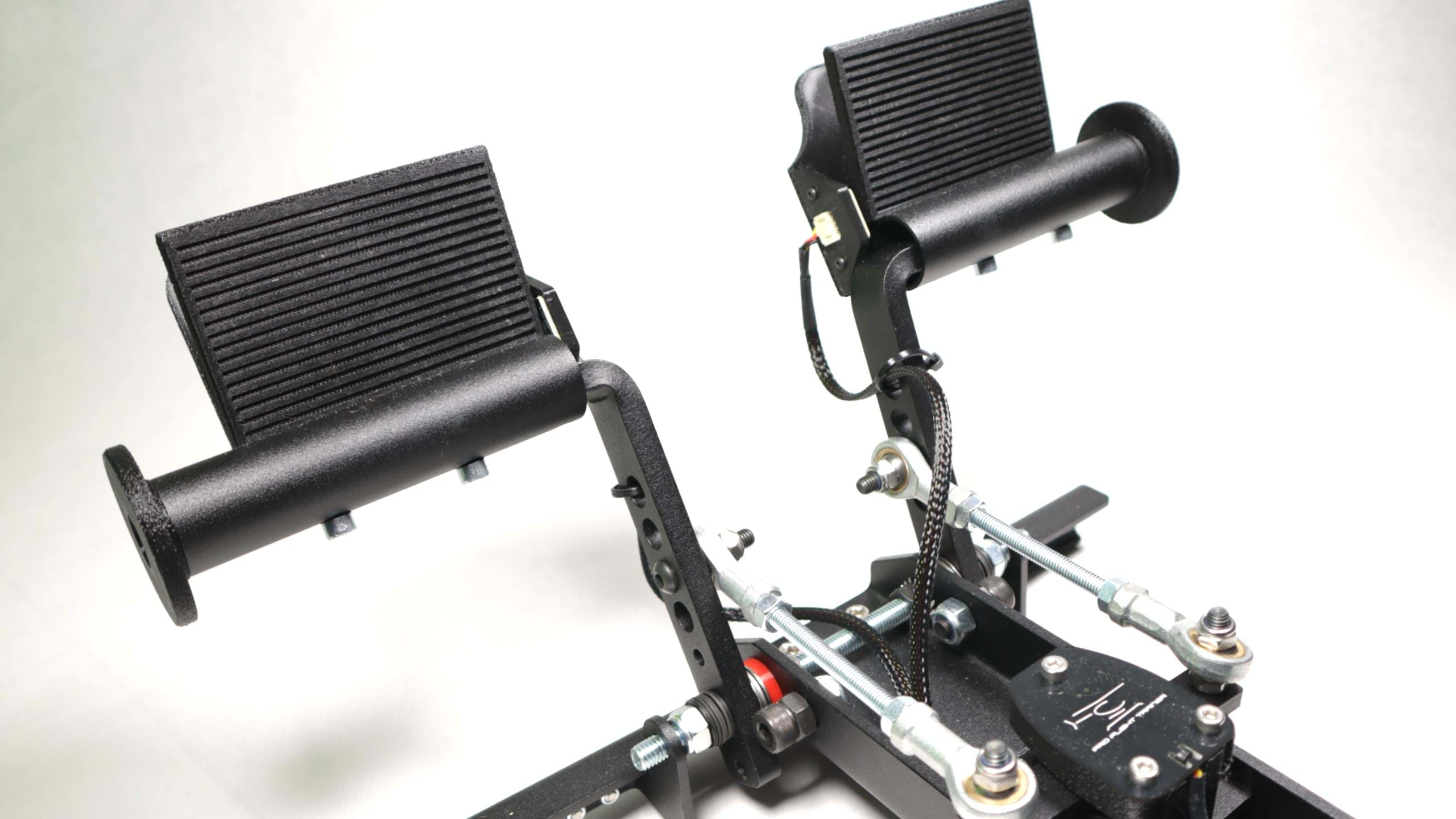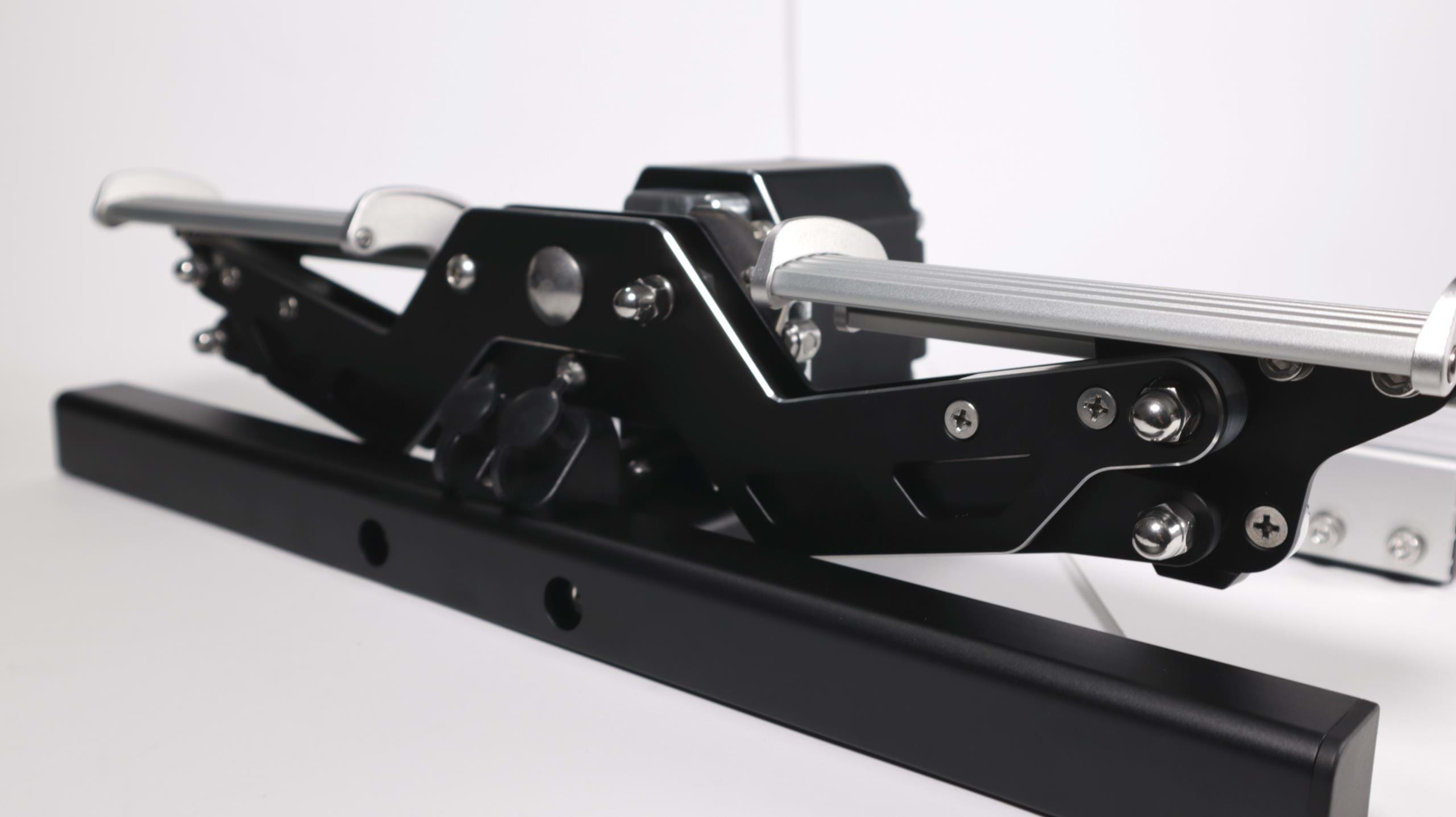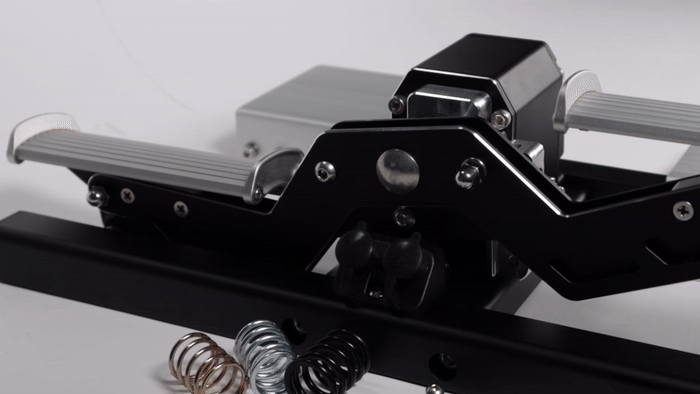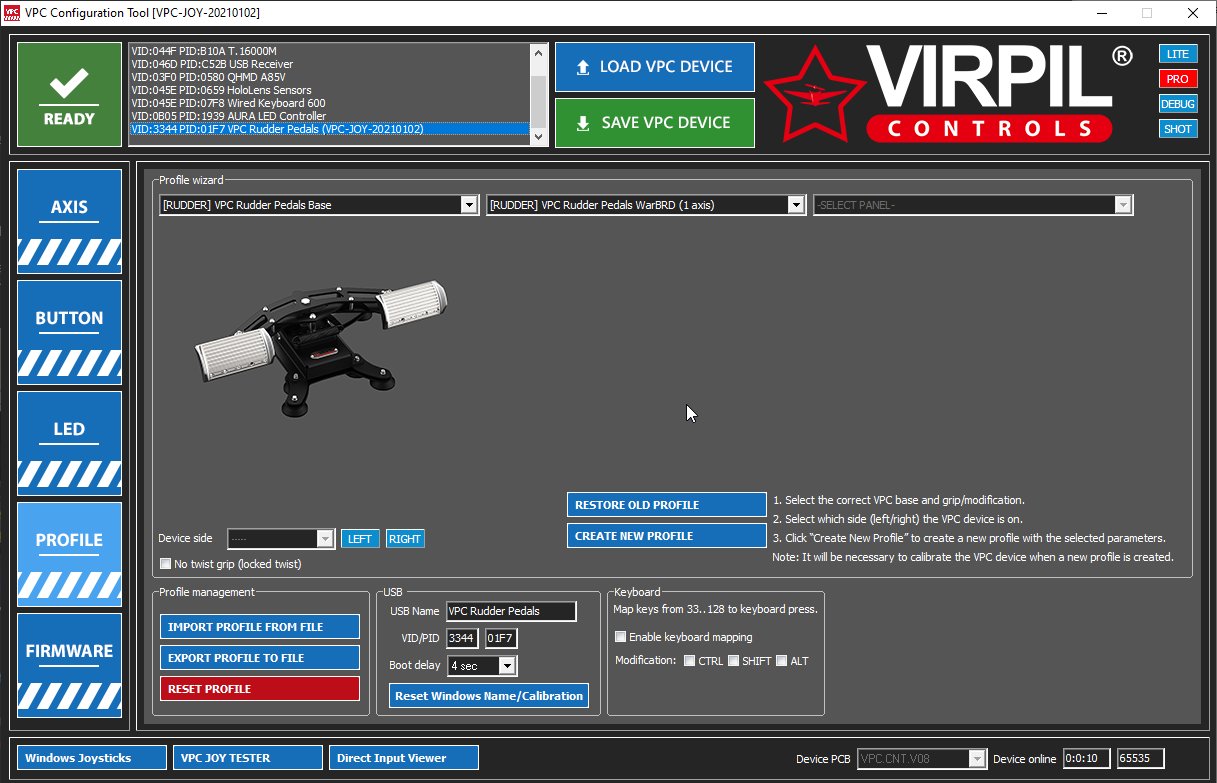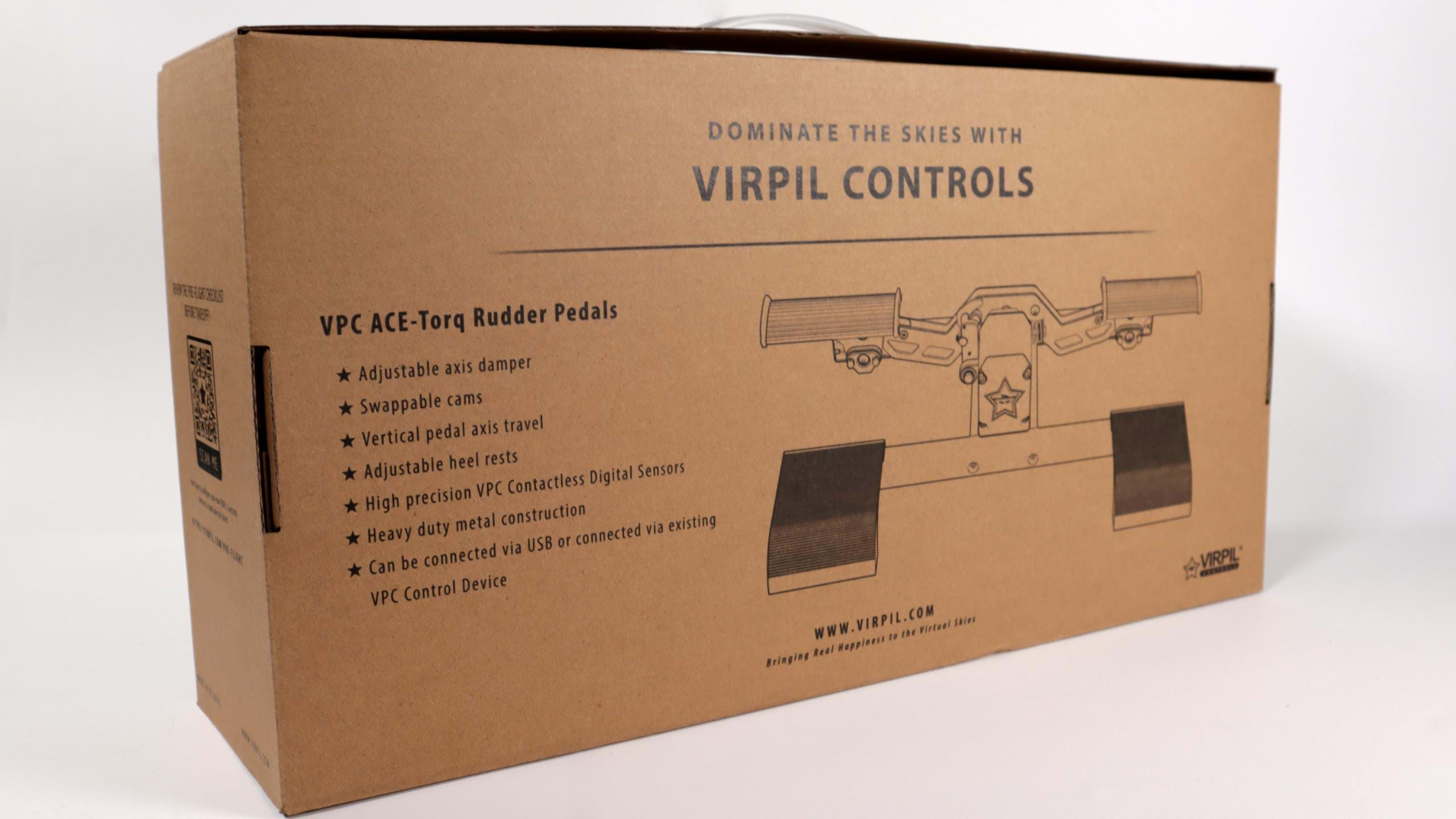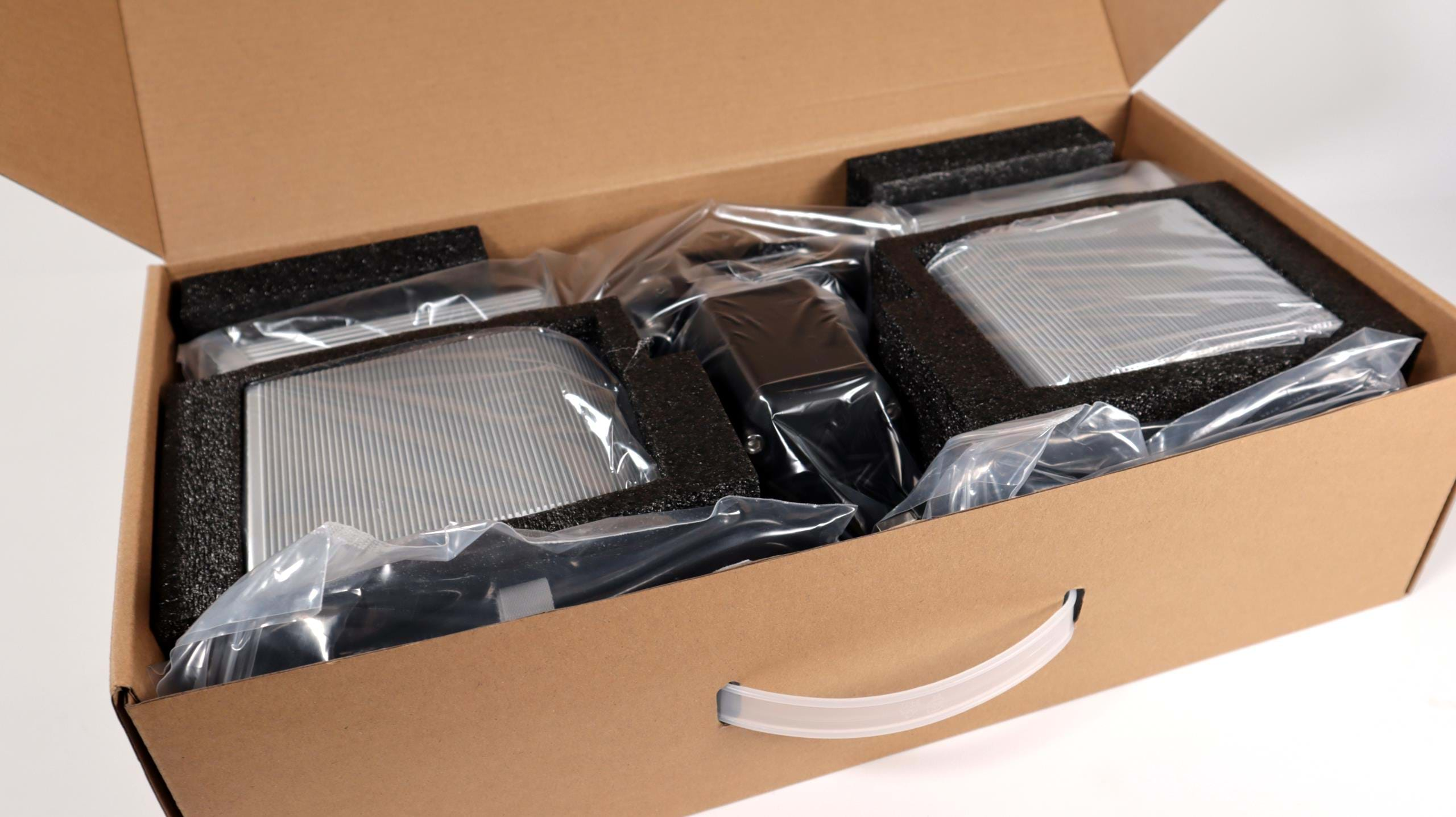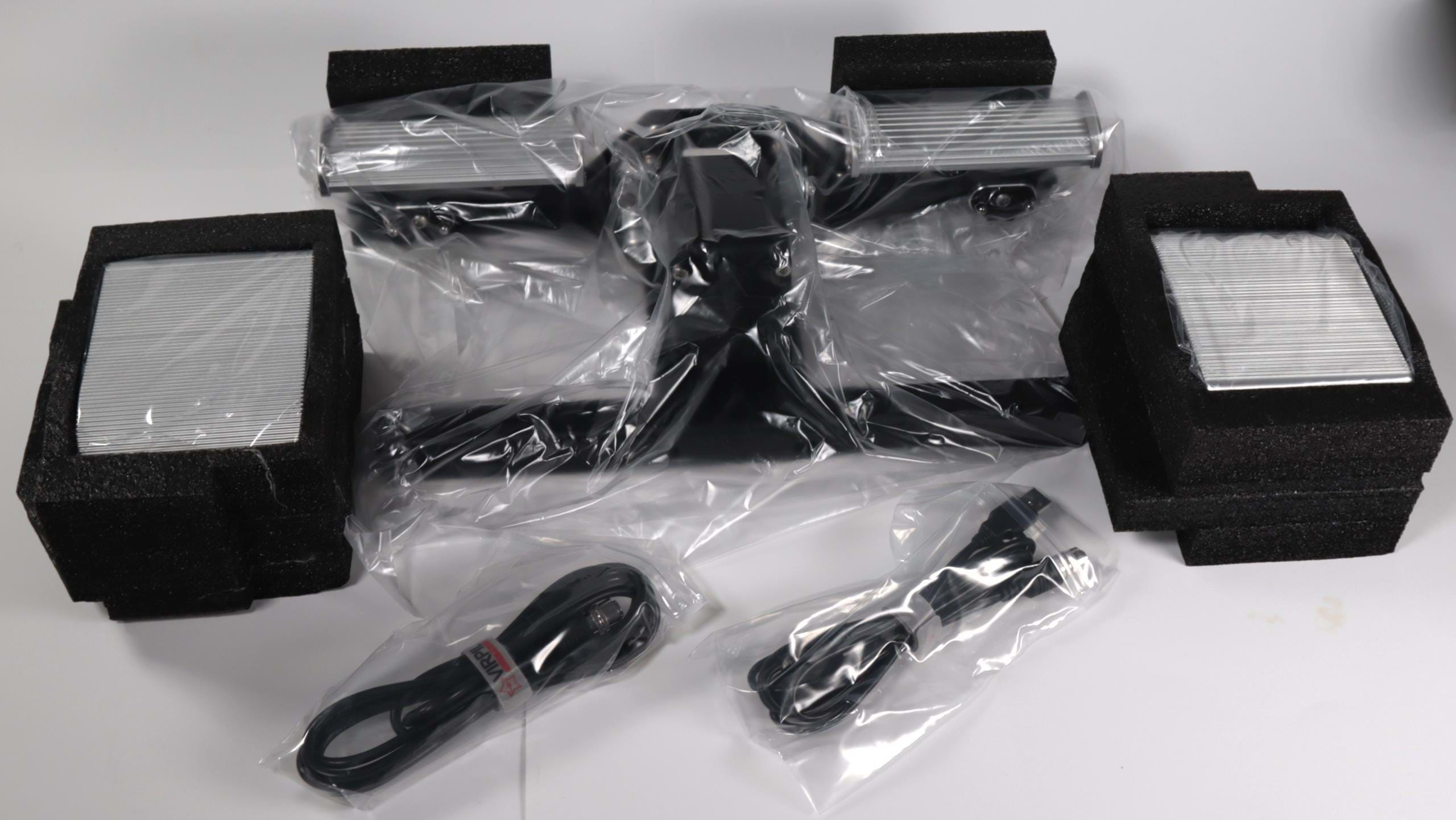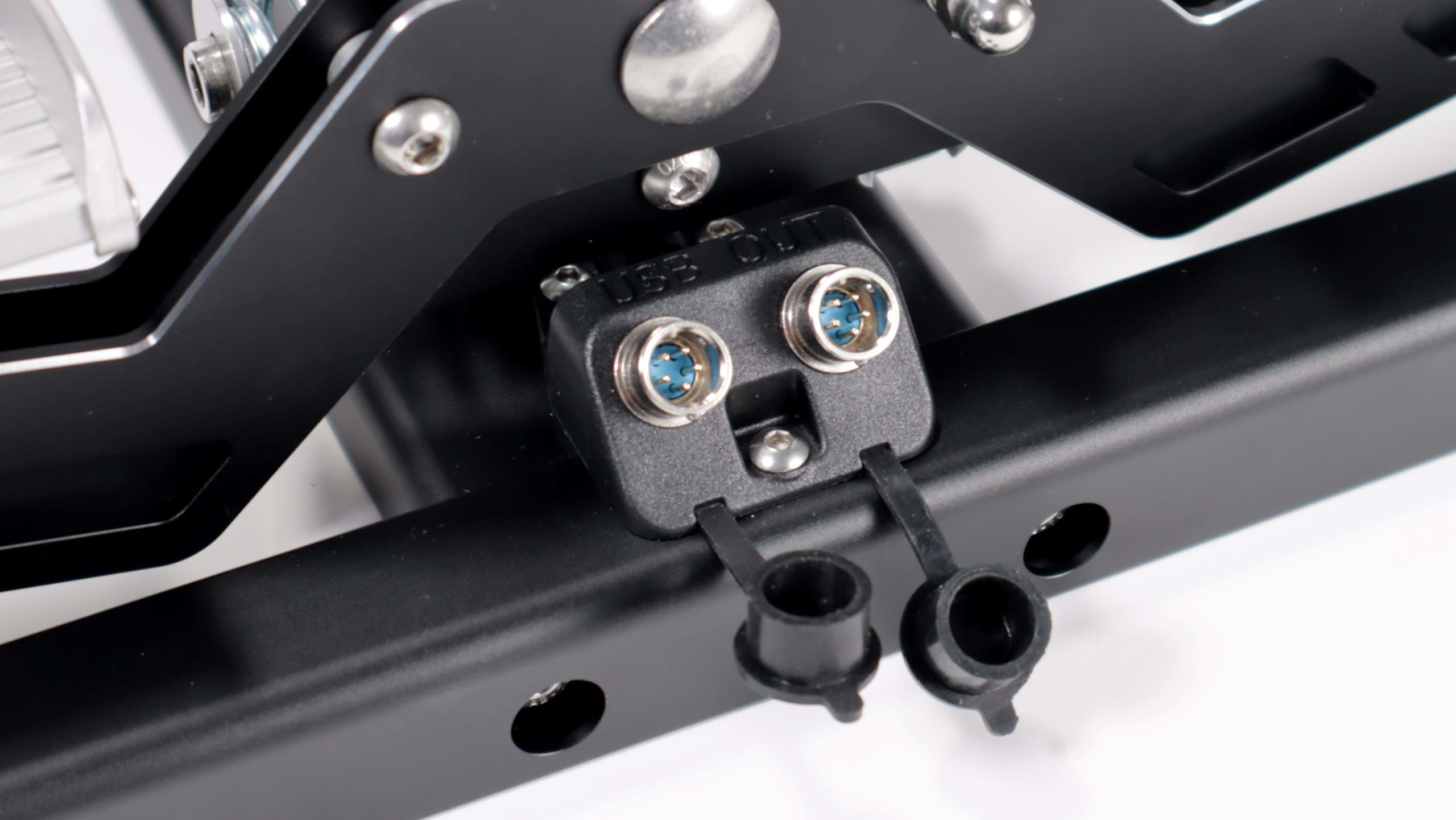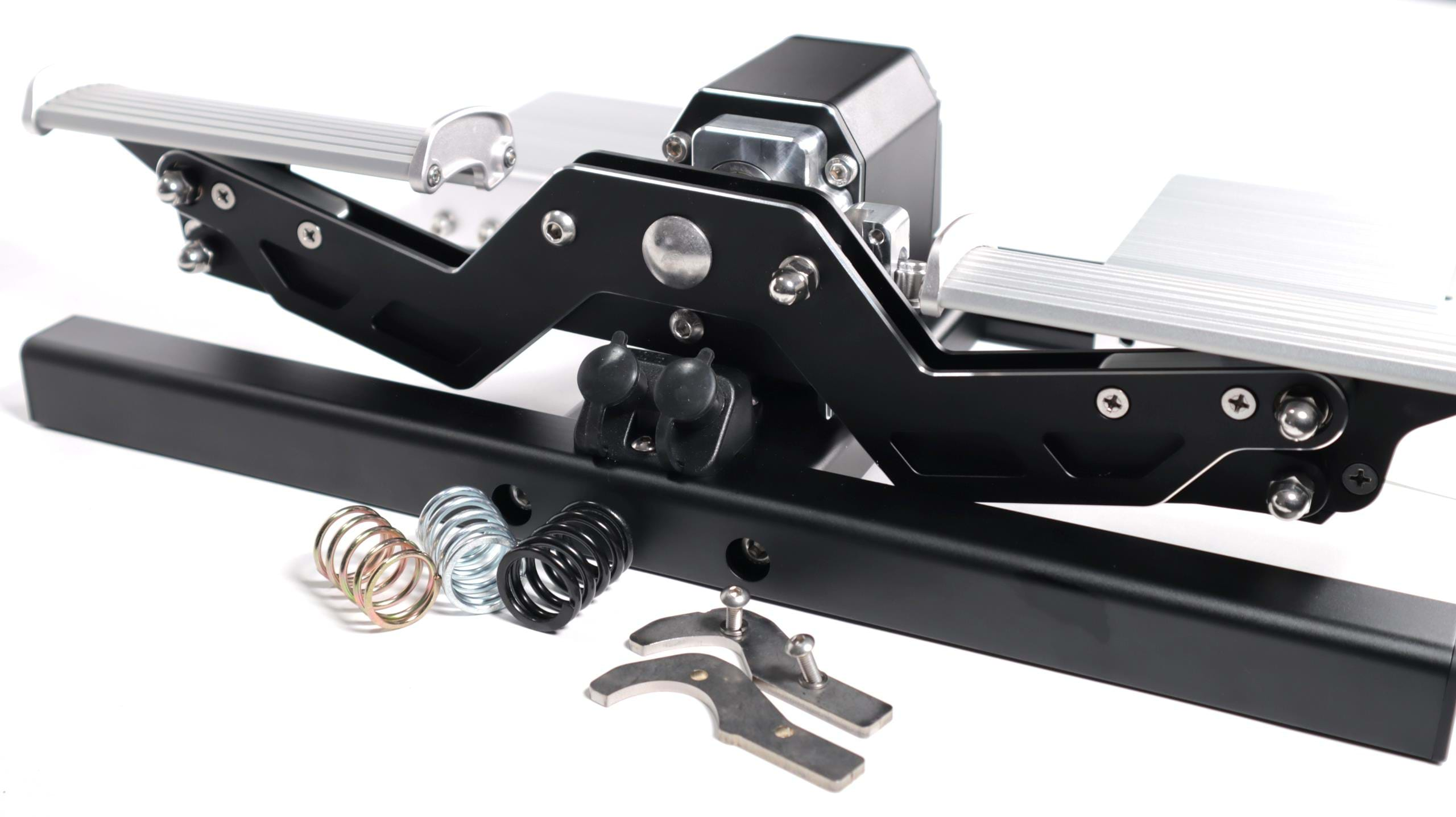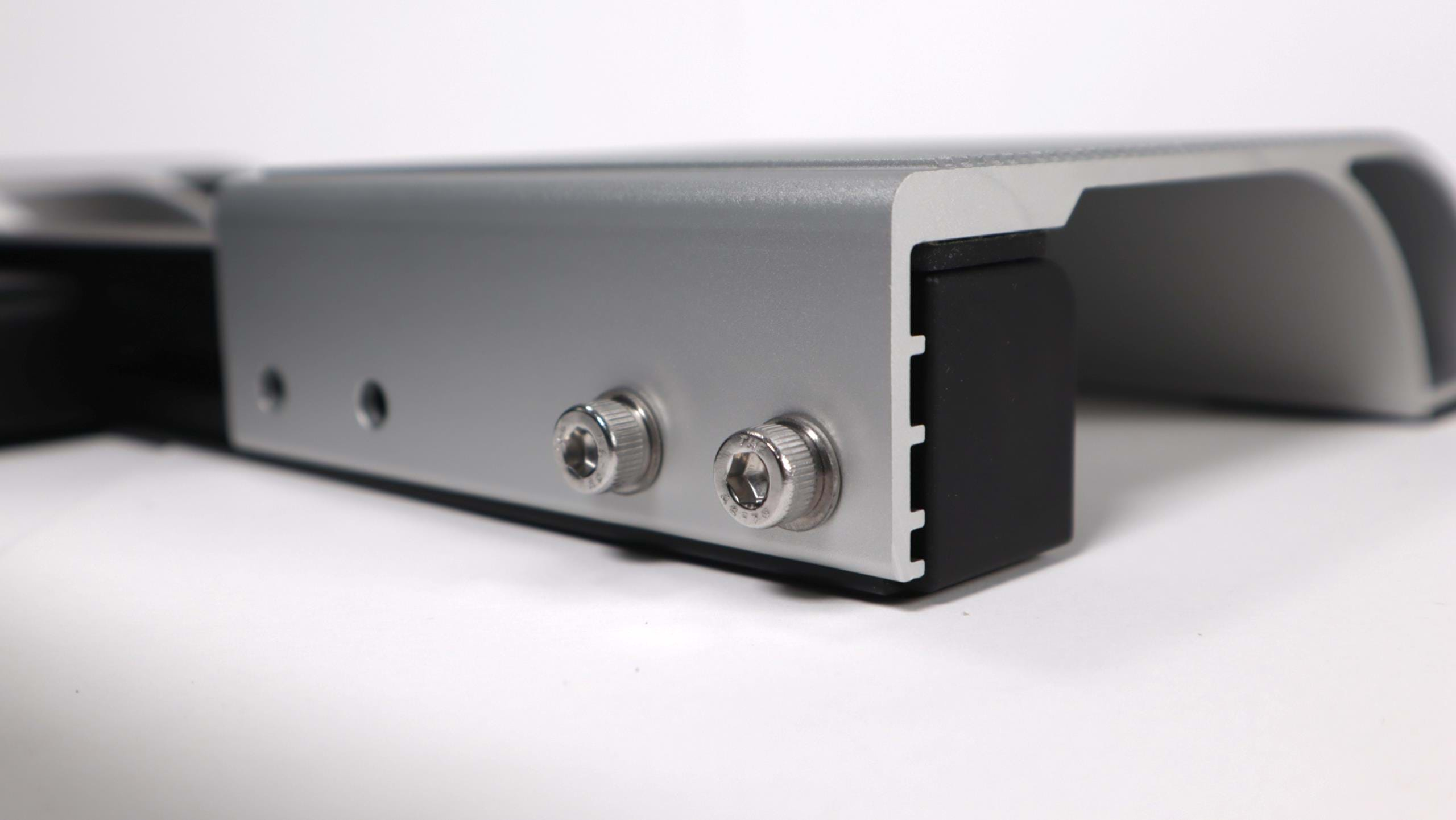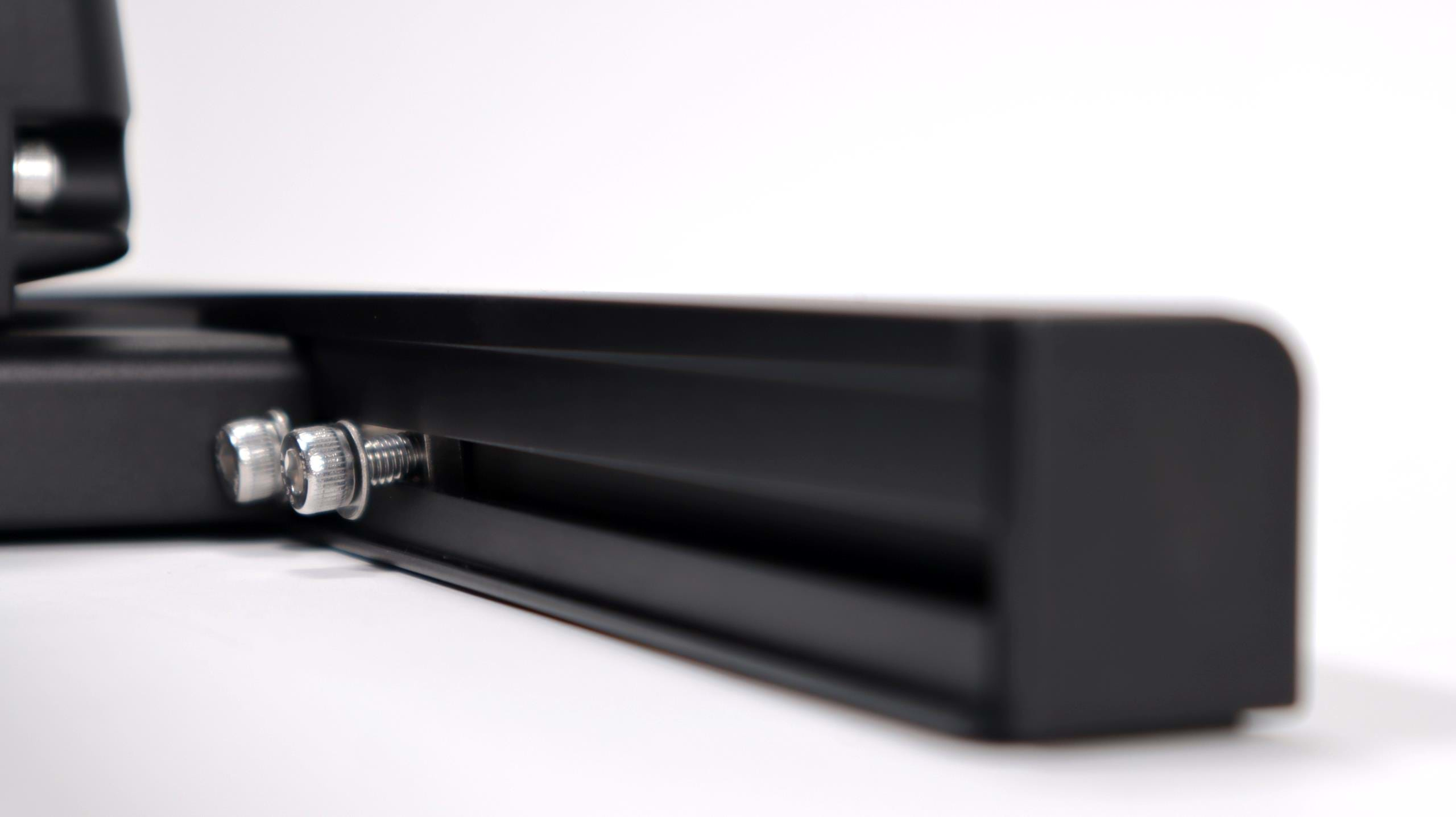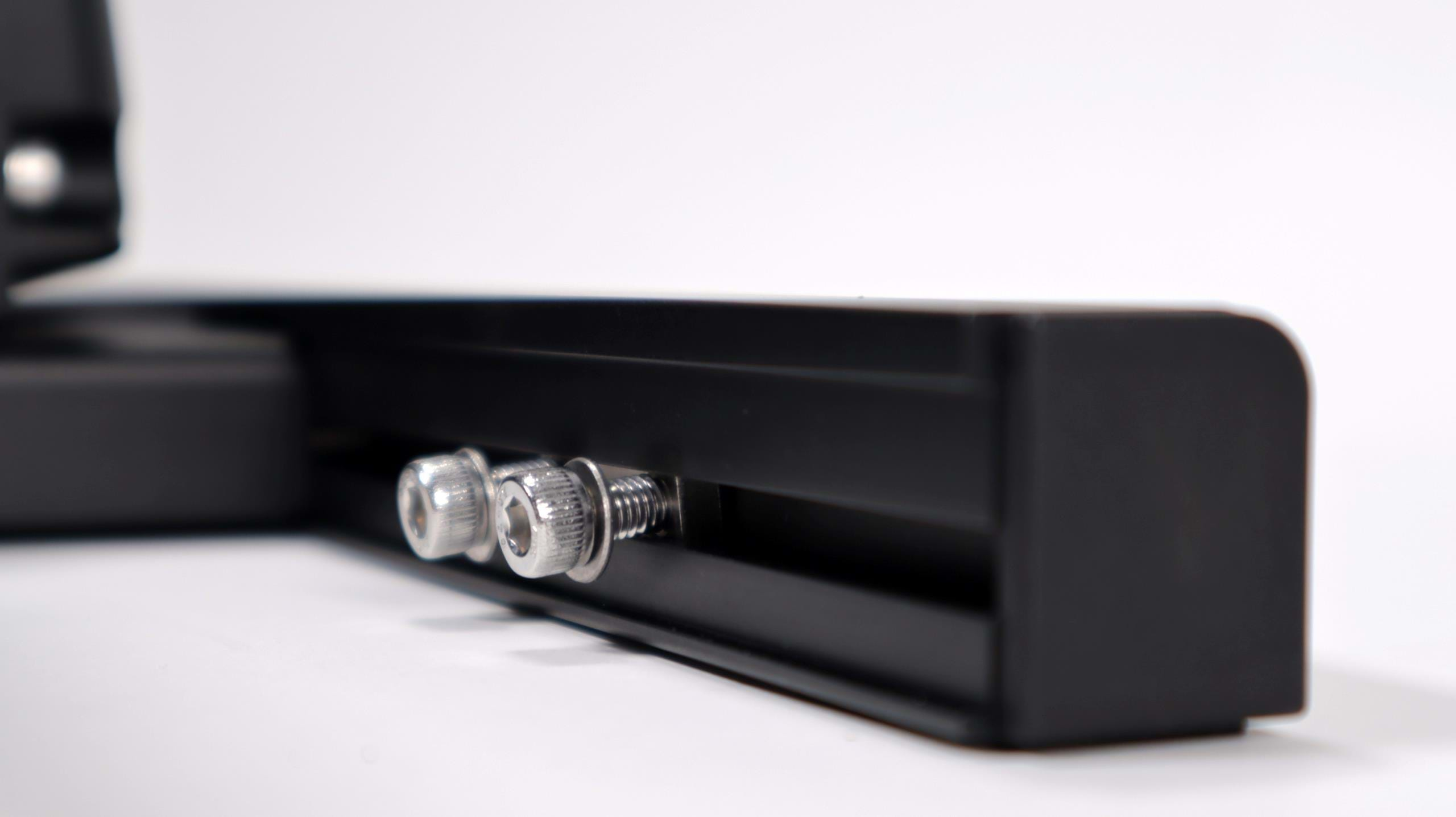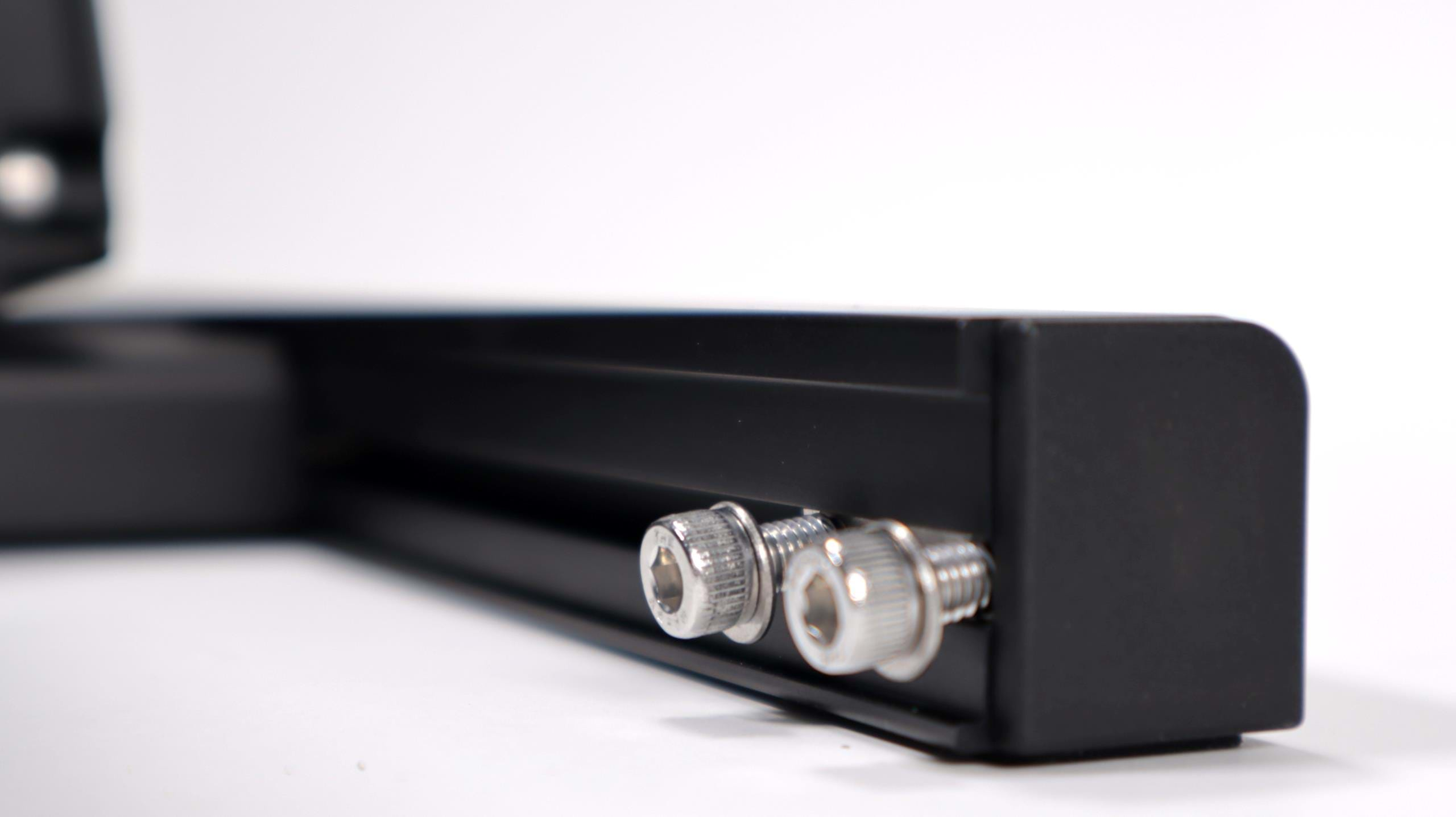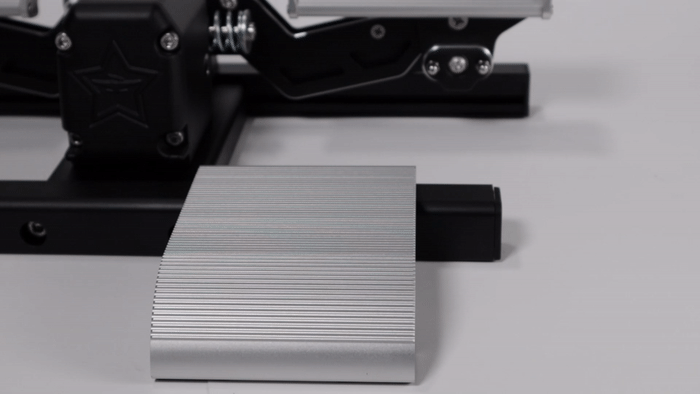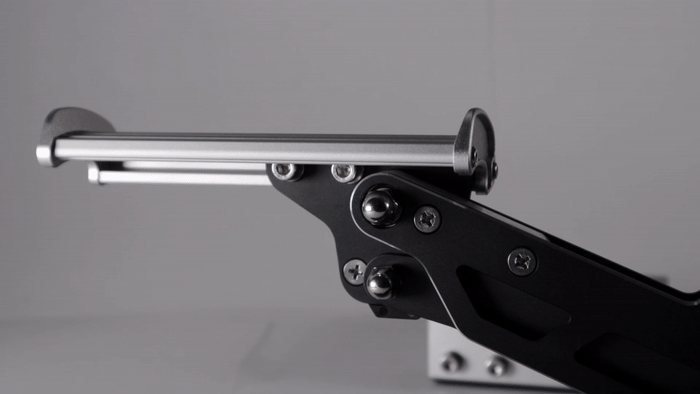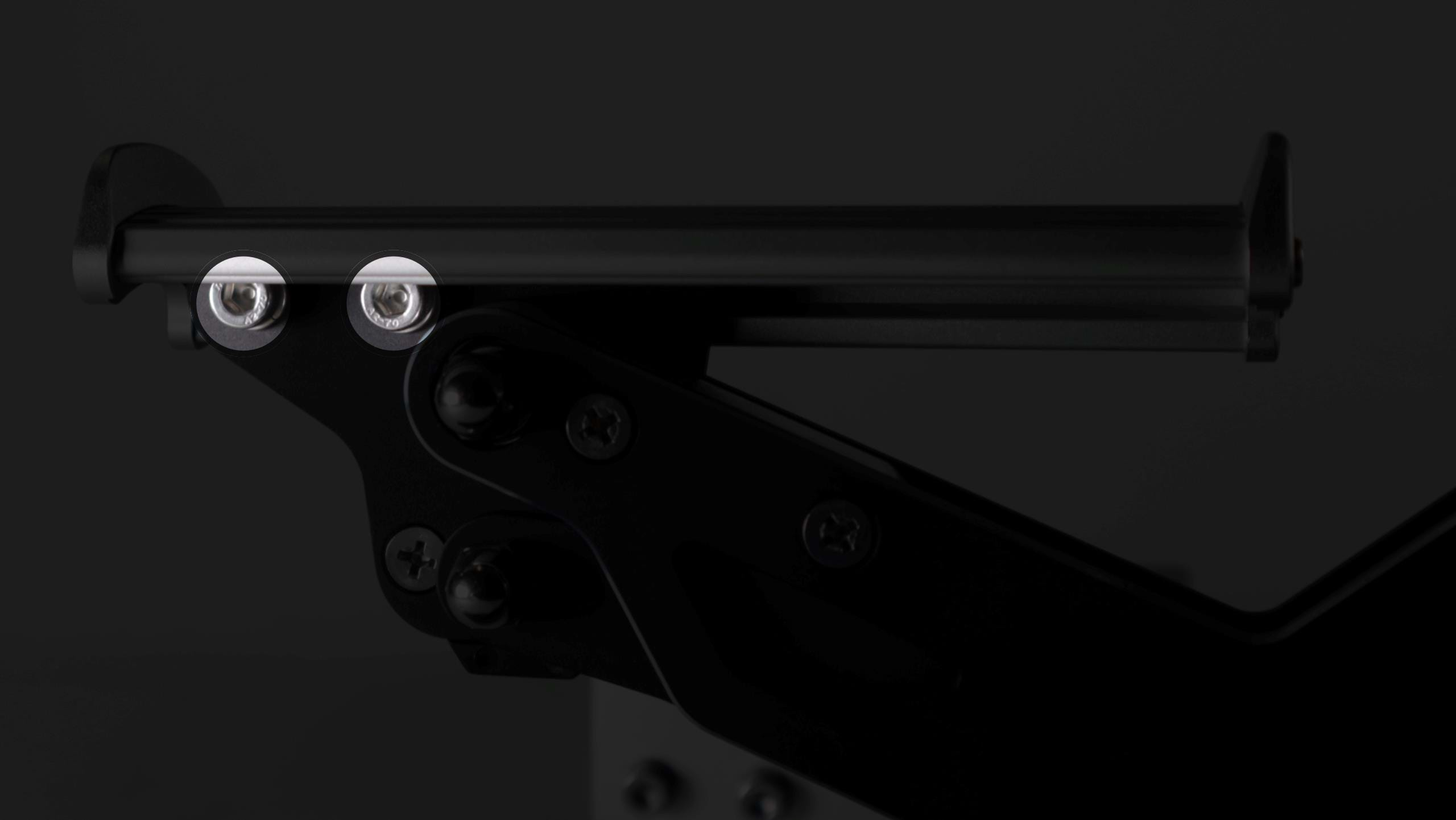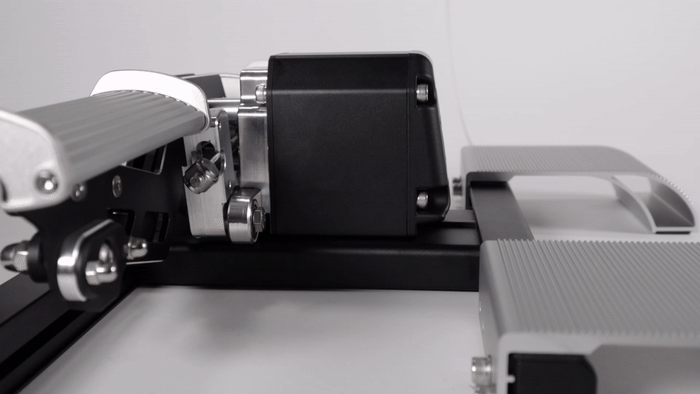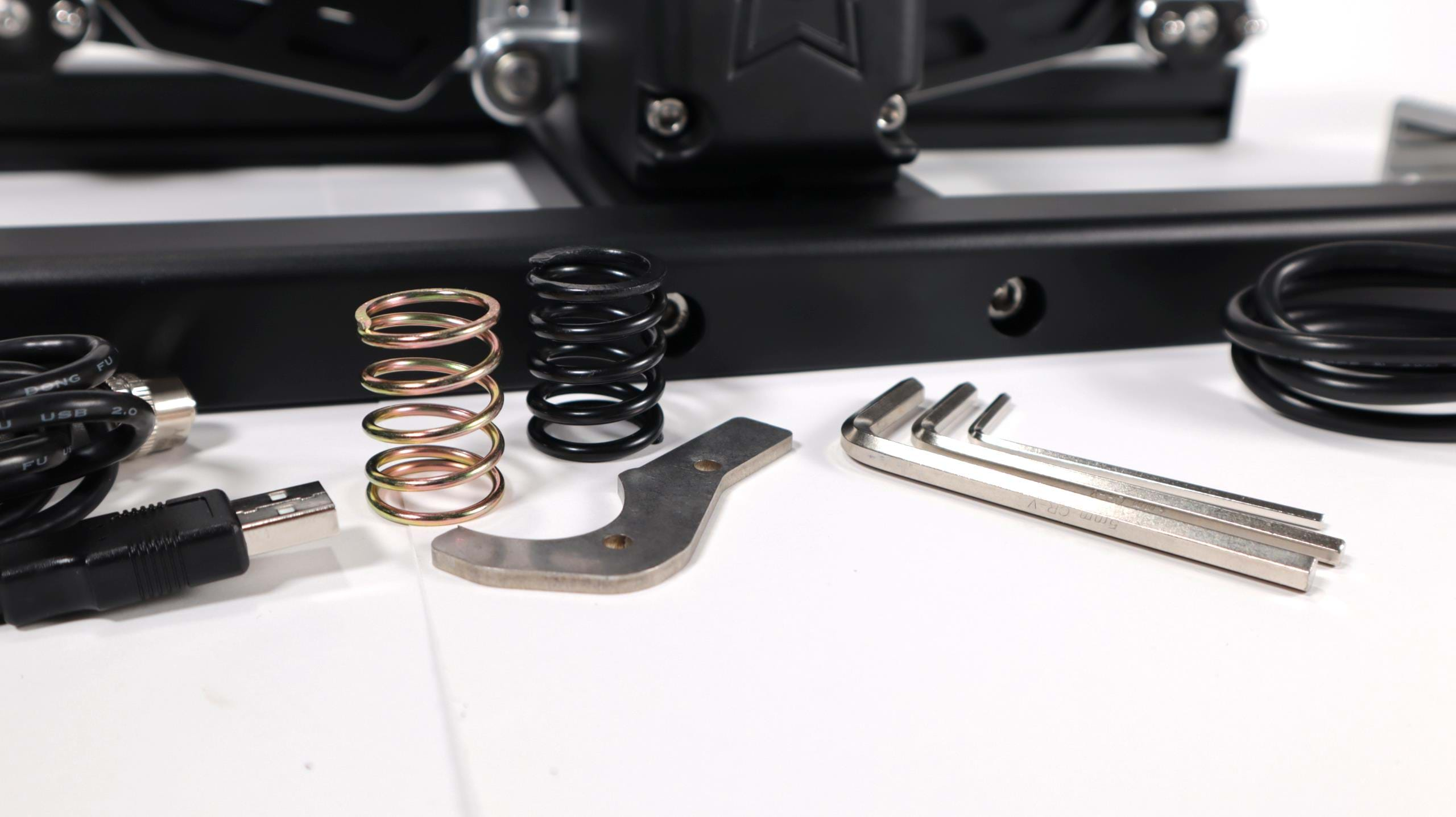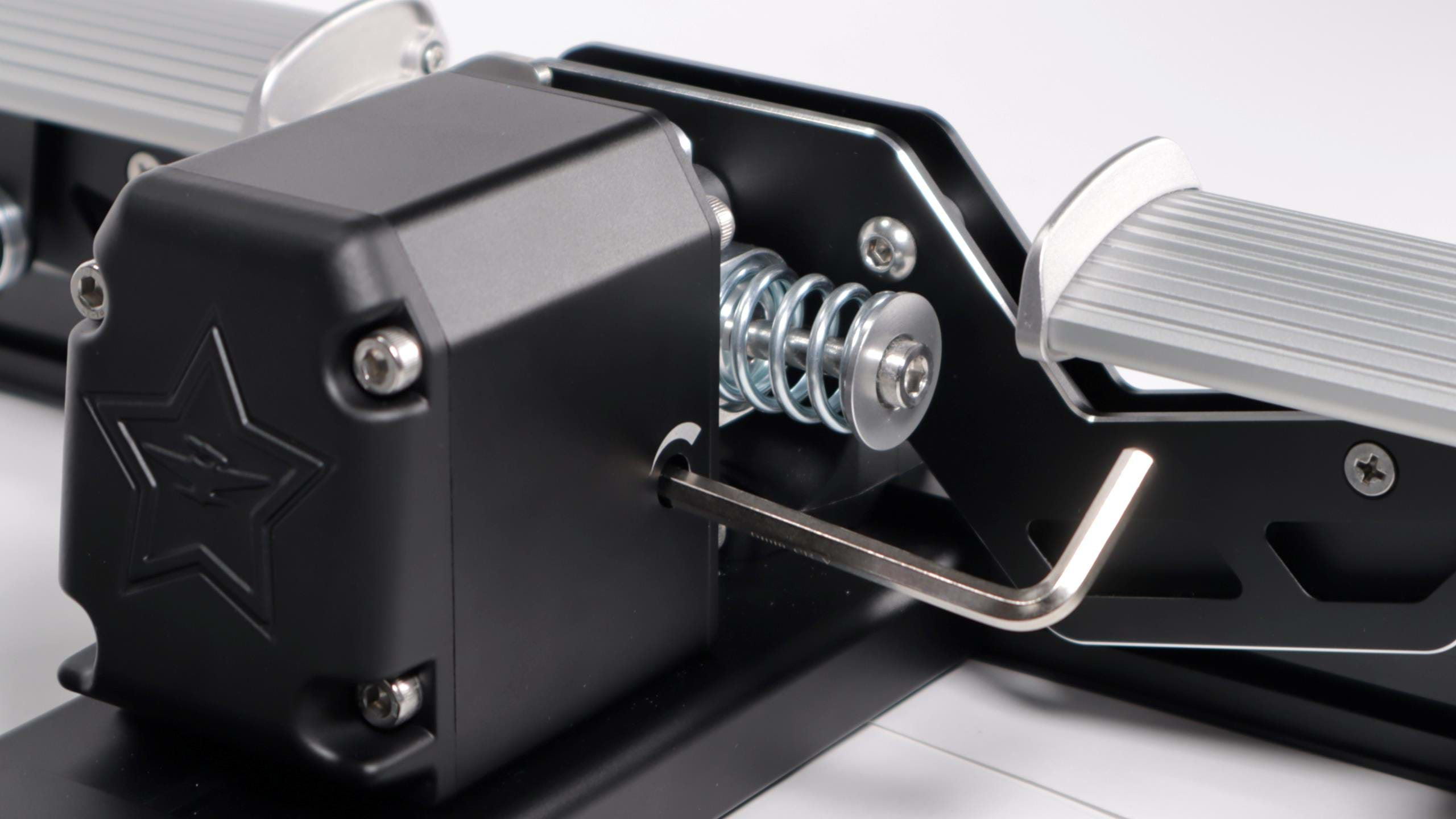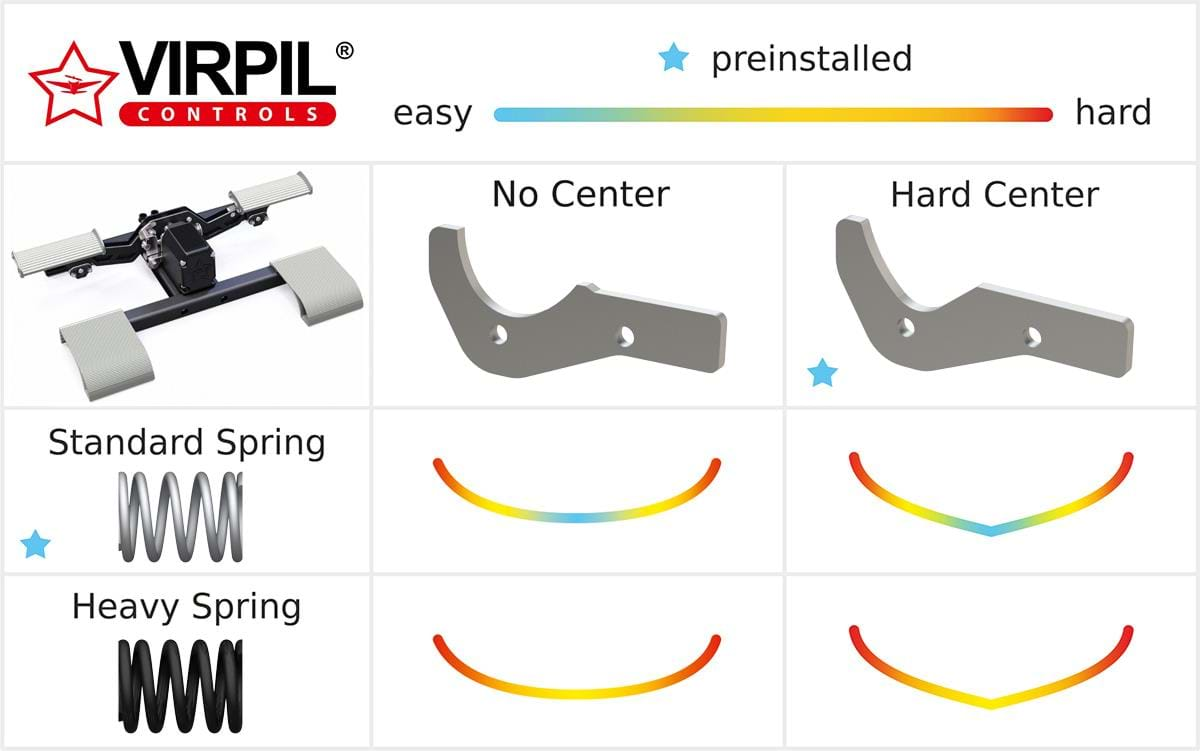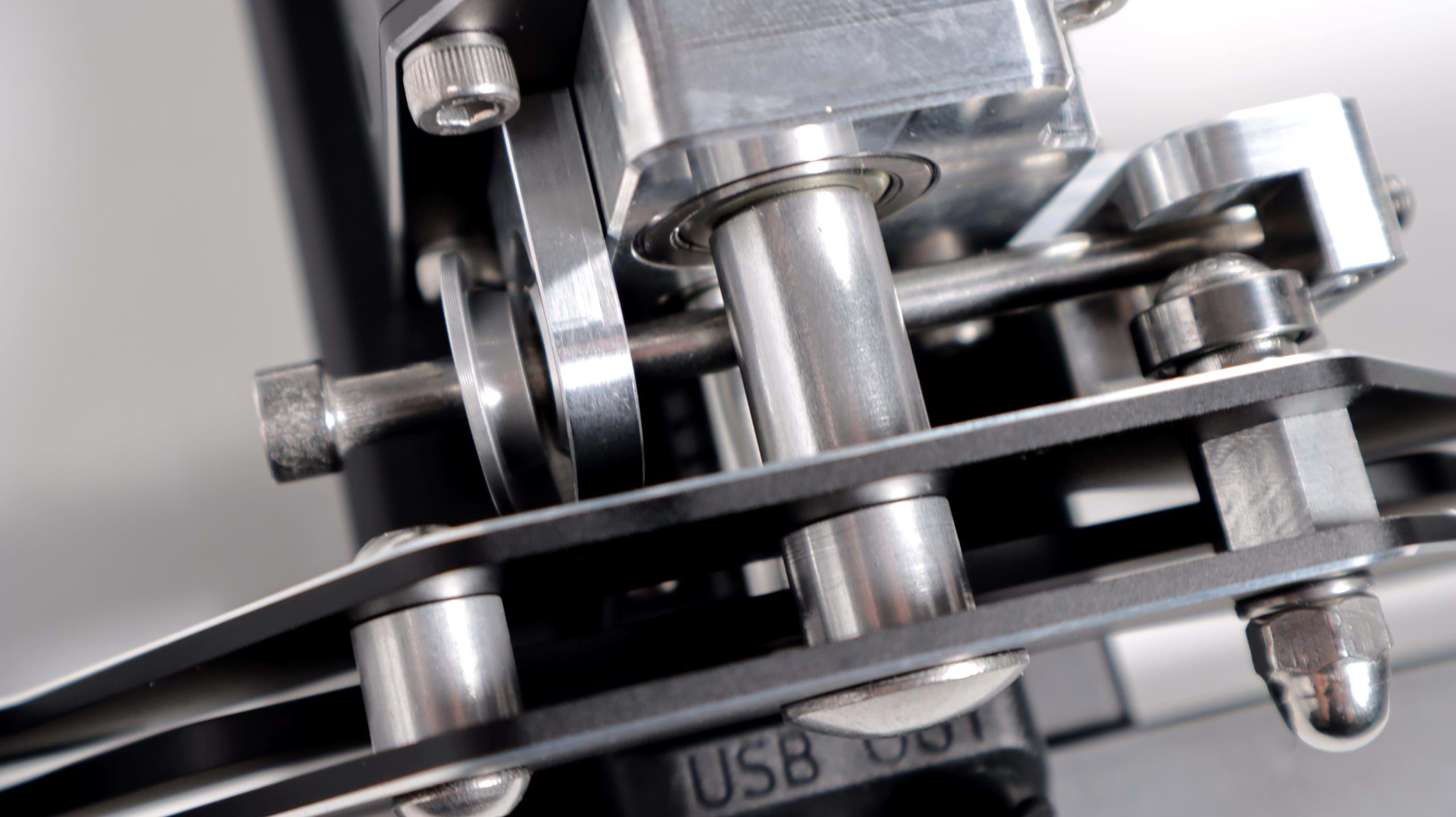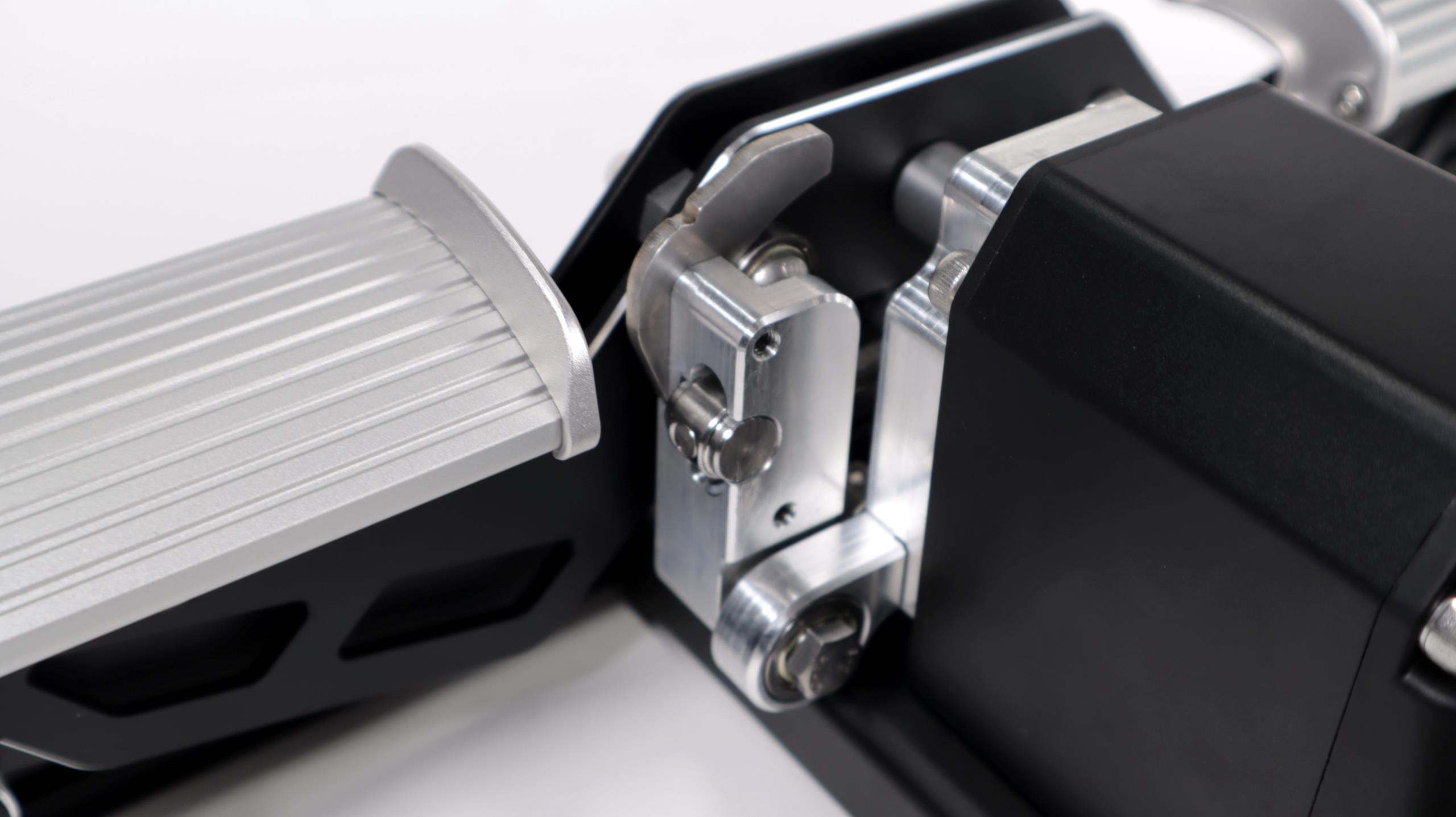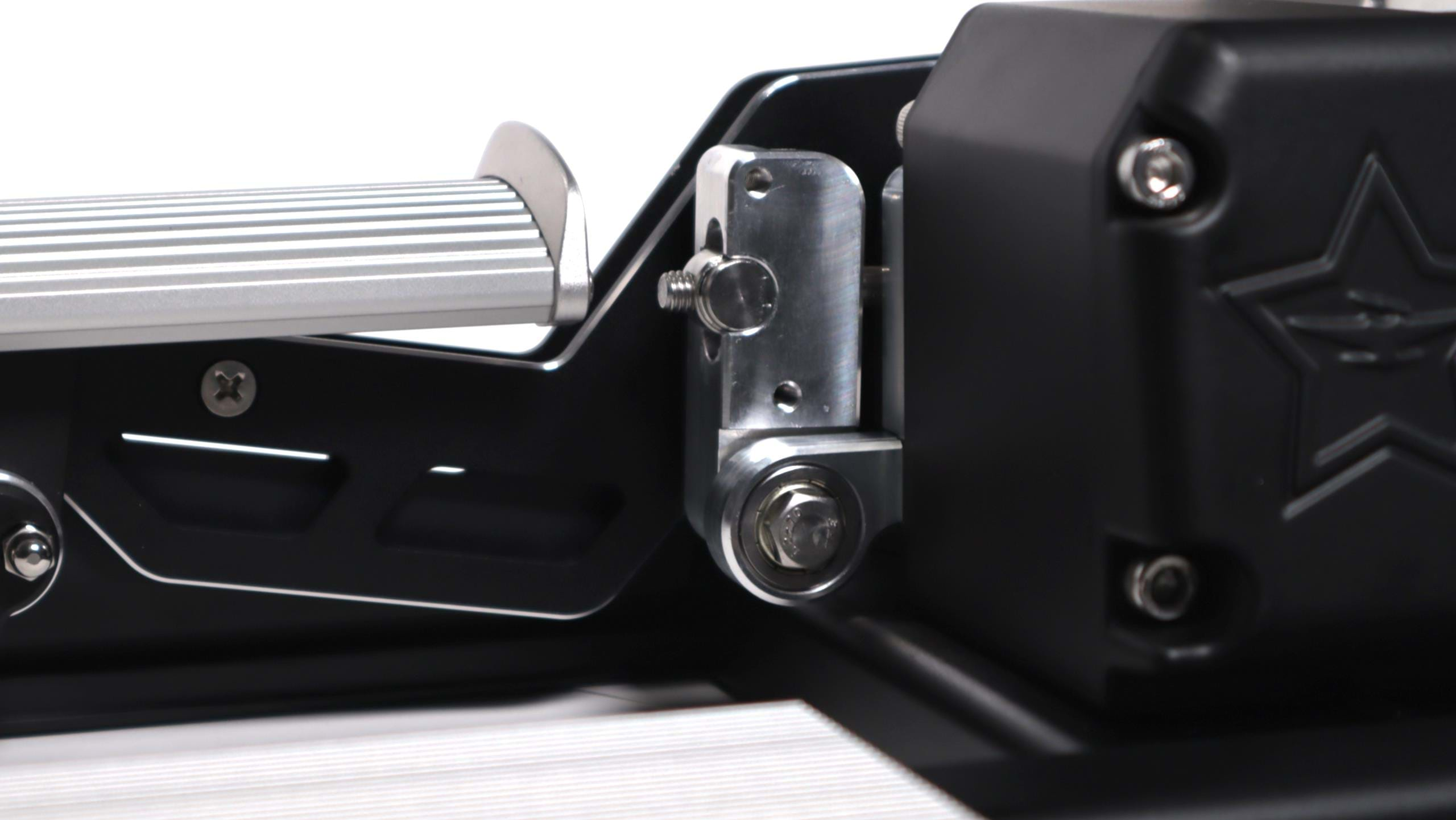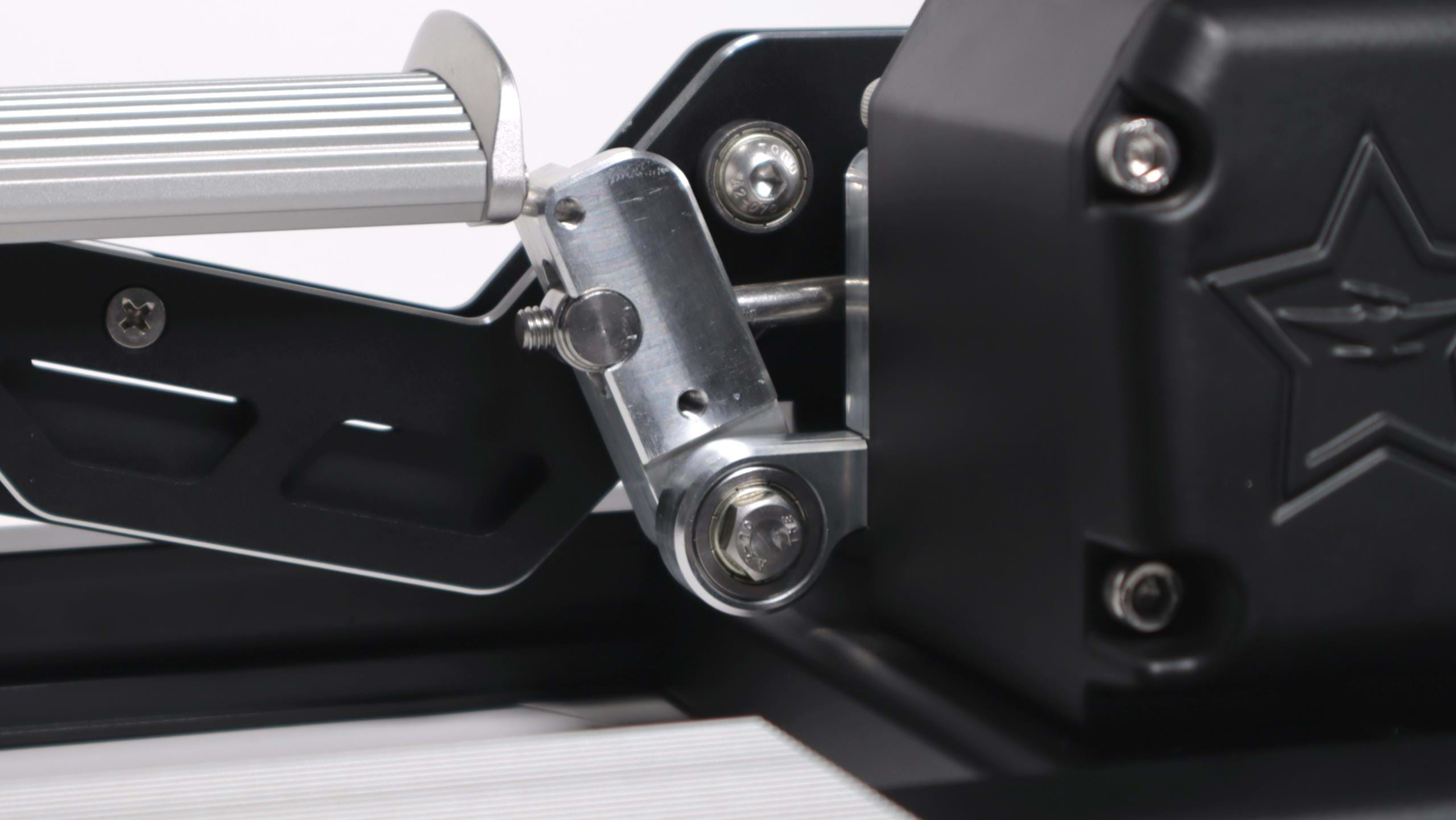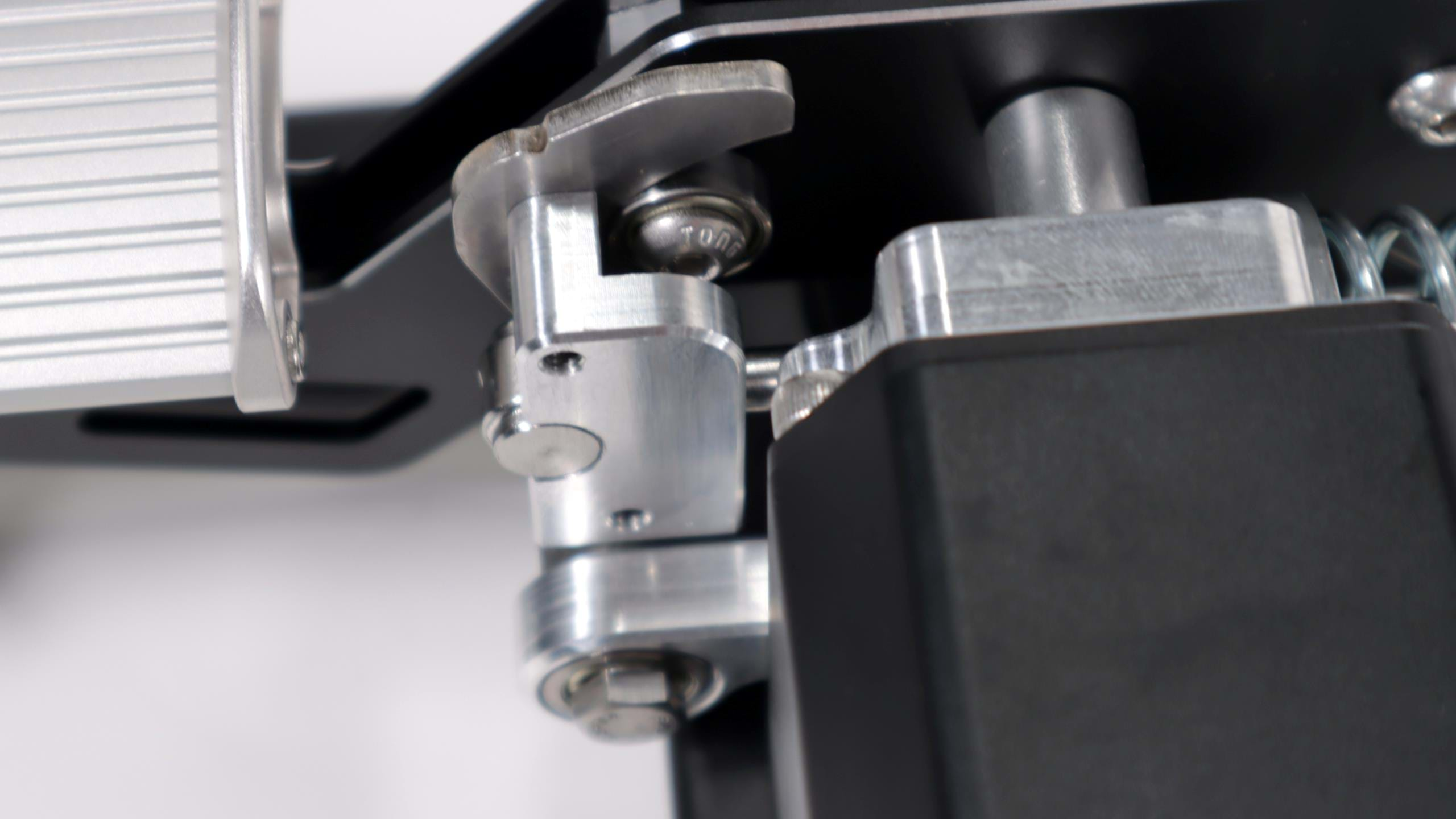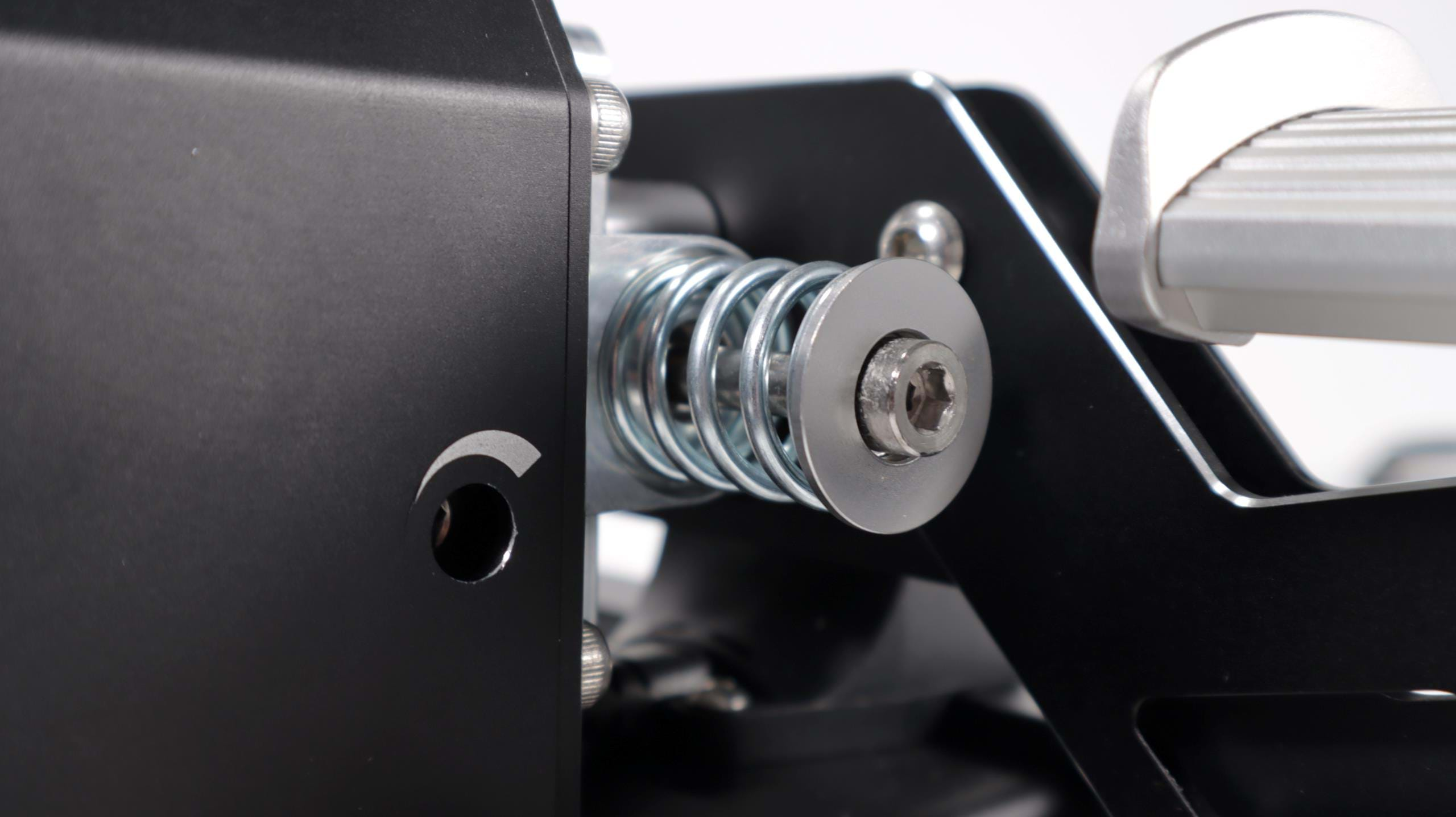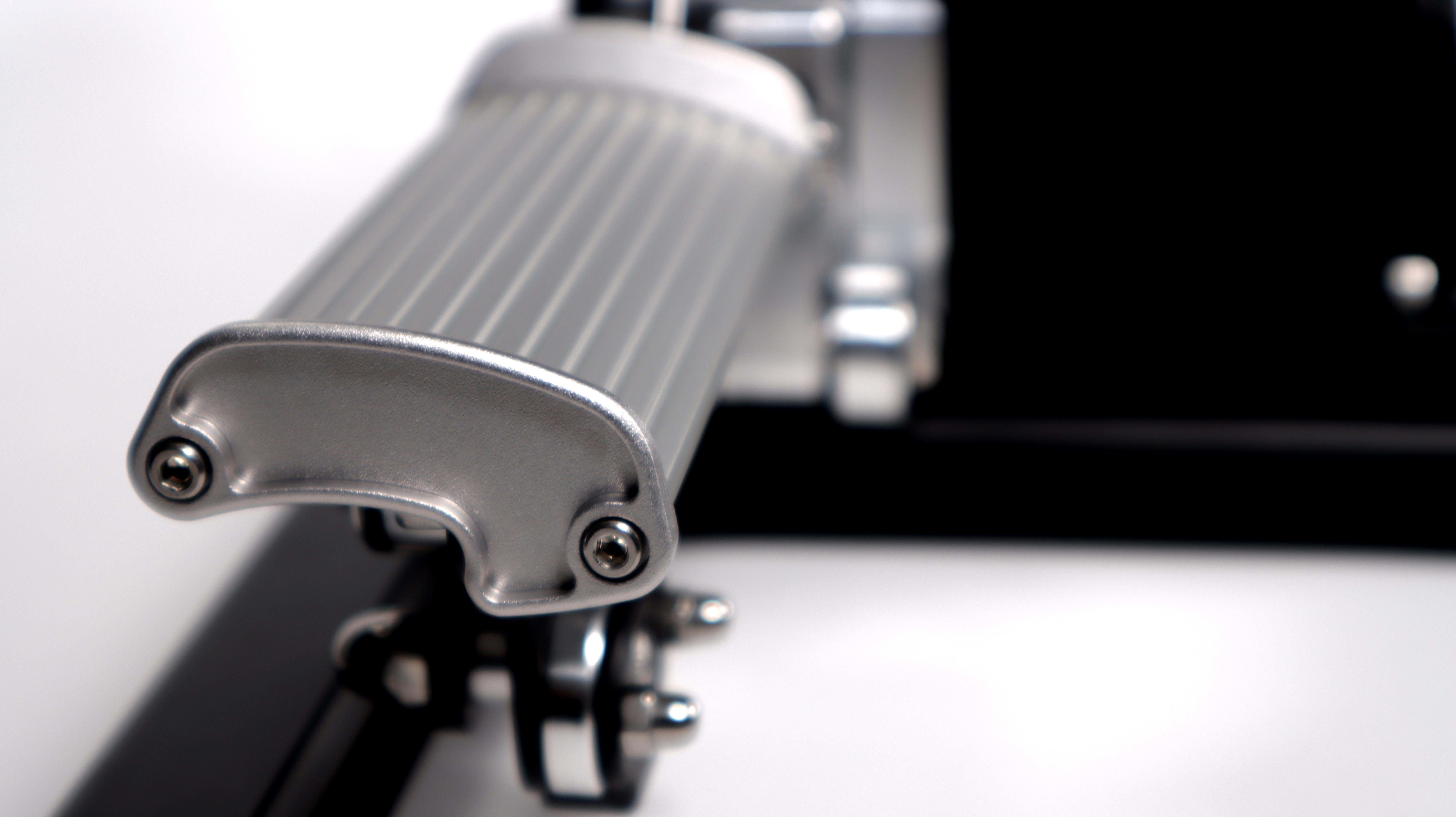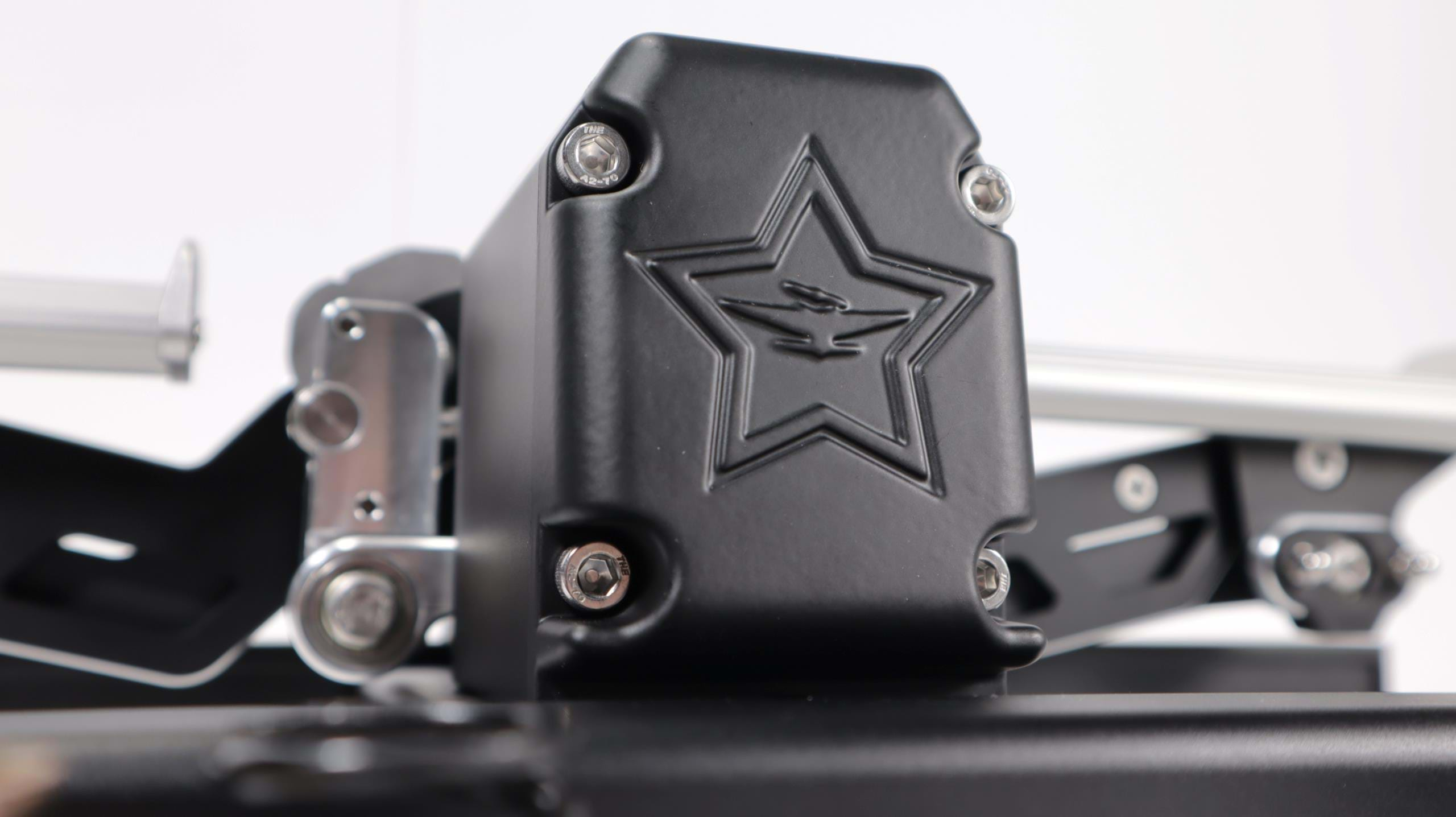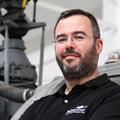Here comes the disclaimer!
VIRPIL sent me this product, free of charge, to review it. Nonetheless, as with all the articles, I will provide you with an unbiased opinion, based on my long simming experience and aimed directly towards the virtual helicopter pilot. I would like to thank VIRPIL for the opportunity.
After the release of their collective system , VIRPIL surprised us with yet another product aimed at virtual helicopter pilots: the VIRPIL VPC ACE-Torq Pedals.
When I first saw their video (which you can watch below) I thought the design was quite… Unique. Ok, I’ll be honest, I found it weird.
Helicopter pedals do come in various formats but there are a couple that is pretty standard, like the inverted “L” shape, which you can see below. We place the ball of the feet on the horizontal bar and push one of the pedals while the other travels in the opposite direction.
Left: the Pro Flight Trainer pedals, which mimic helicopter pedals. Right: the VIRPIL VPC ACE-Torq pedals.
But this is not the case with the VIRPIL VPC ACE Torq pedals. The design is quite different. It has a seesaw-type of movement in which you push one of the pedals downwards and the other one goes up.
There was something that I did find immediately interesting, though: the size. It seemed like a very compact unit. And it sure is.
That seesaw movement, though… I was not convinced when I first saw it, honestly.
Before diving in, let me put this out there, as usual.
Important note: if you have multiple VIRPIL controls, make sure you connect one at a time and set them up separately to prevent issues, conflicts or even damaging your controls.
As with any other VIRPIL product, make sure you update its firmware first, with the VPC software . This is a process that takes only a few minutes and it’s something you shouldn’t skip. In fact, you should do it every now and then.
The box
The box?
The box. Why am I talking about the box? Well, because it’s different. VIRPIL’s products always had great packaging, and everything has always been shipped securely and tight. But the new box…
Daaaaaang. It’s so nice!
For starters, there’s a drawing of the pedals and a list of features, along with a handle to carry it. Not that we are going to carry it around. I think?
The internal product protection and organization impressed me a lot. Everything was nicely protected with some synthetic custom-made foam where the parts fit just nicely.
Under one of the footplates (where our feet rest) you will find the 2 cables (more on that later) and the small extra bits VIRPIL ships: 3 hex (Allen) keys, 2 springs, and 1 extra cam.
Something curious: the manual only indicates the preinstalled spring and an extra spring, but I actually got 2 extra springs, PLUS the preinstalled one, so 3 springs total. I contacted VIRPIL about this and they said that the third spring is an extra light spring which is being shipped with the first 1,000 units. Thank you, VIRPIL! That’s cool.
The 2 cables allow you to plug the kit directly into your computer (through the USB plug on the pedals) or you can connect to another base, via the OUT plug.
Doing this will allow you to use only a USB port on your computer since you will be connecting the pedals to the other base and then the base connects to the computer. Pretty cool.
First contact
I took it all from the box and started assembling which is pretty straightforward. I do recommend you check out the manual so that you understand all the capabilities of the product.
There are a lot of small details that are handy, and you may miss them if you don’t, at least, skim through it. I would miss one of the configuration options for sure if I hadn’t looked at it (I’ll let you know which one in the section below).
Setting things up (and there’s a lot you can set up)
All right, so what exactly can we do to set it up.
First of all, since you have to assemble them anyway, you can start with the footrest plates. You can position them across the bar that supports them, and they have a couple of places where you can screw them to the said bar.
This allows you to place them closer together or further away. As I said, you can place the plates anywhere as the part where you screw them into travels through the support bar.
You can slide it to any position you wish. I have measured the travel distance of each plate and you have 10cm (around 4in) between the closest and farthest points of the bar.
The actual pedals can also be set up laterally. I’m pretty sure you will find a comfortable position, provided the amount of room you have to displace both parts.
Doing so is easy and you will only have to loosen a couple of screws.
You can also change the distance between the pedals and the footplates. And this is the part I would have missed if I hadn’t checked the manual.
Underneath the pedals, you will find 4 screws that you can loosen and the whole block there the foot pedals connect to can then travel backward and forwards. It’s not a huge distance (2cm or .78in) but it helps.
Finally, you can set up the movement of the pedals.
When you get the pedals out of the box and try them you will notice that it has a “center” and there’s a spring, which forces it to be centered.
Which, as helicopter pilots, we tend to hate, right? Well, I do, at least. I really don’t want to keep on fighting the pedal and forcing it to stay in place as I am flying around. So, not having a centering force is a plus for me.
What can we do about it? Can we modify it?
Well, there are a couple of things you can do.
Changing the spring won’t help since the ones that come extra are stronger. BUT we can remove it.
We can also replace the cam with the one that does not have a hard center.
But there’s something else we can do as well. VIRPIL added a very nice feature to the pedals: an adjustable clutch damper system.
On the right side of the big main block (if you are looking at the pedals from behind like if you were using them) you will find a hole. If you peek at it, you’ll notice a hex screw inside. Yep, grab a key and give it a try. You can loosen or tighten it and make the pedals a bit stiffer or loose.
I like pedals to have a bit of friction. When K-51 released his mod for the VPC “conventional” rudder pedals, I had to try it and I was not disappointed. That bit of friction helps me a lot to maintain control as I don’t tend to push the pedals too much.
And that’s what this clutch system allows me to do as well.
Between the removal of the spring, the cam, and the clutch, we have a lot of control over the travel of the pedals, and we can adapt it to our own needs.
My setup choice
All right, I know I already indicated what I did, but let me recap it and also let you know a bit more about what I did to set it up.
You see, when I removed the spring, I noticed that the rod where the spring is placed (which also contains the cam) was loose. Because there’s no spring to apply pressure.
So, the part where the cam usually is dropped to the side and, when the pedal plates are on the position closer to the center, it could hit and potentially damage the unit.
But I didn’t want the spring in! I didn’t want to have that force hampering my flying! So, what did I do?
I added the spring.
Defeat, right?
Nope. Not really.
I started looking at the whole system and I wondered if I could still place the spring so that the rod would stay in position but without having the spring acting upon the rod and the cam.
Guess what?
I could!
With the no-center cam, the rod pretty loose, the spring getting everything nice and tidy, and some adjustments on the clutch system, I was all set!
It was time to put it to its paces.
OK, how odd is it? And how good is it?
You’re wondering that too, aren’t you? How odd is it?
I know I was.
I have used different types of pedals. Most of what we see in the market are rudder pedals for fixed-wing aircraft. The number of pedals for helicopters is very few. And the number of pedals we can adapt for helicopters is not great either.
It’s easy for you to be used to the regular rudder pedals or a set of anti-torque pedals. And it’s easy to get used to this system as well.
I was expecting to find it weird. I was even expecting to feel my leg muscles pull or get tired over time because of the position of the pedals. But the truth is, I didn’t.
And I didn’t because these pedals need to be used differently from other pedals. They work the same, of course. They are comprised of an axis, and you control the yaw of your aircraft. But the way you position them is different.
The forces that you apply to them are different. You are applying downwards forces. Your feet are moving differently from an inverted-L pedals or some regular rudder pedals.
You will have to position the pedals differently on the floor as well as you will not have your legs stretched as much as in other pedals (like the Pro Flight Trainer pedals I have shown above). Instead, your feet will be closer to your chair, which is a nice secondary effect: you need less legroom.
But it doesn’t feel weird. Just different. It’s actually quite comfortable.
Oh, and the downwards-instead-of-forwards force helps the pedals stay in place. VIRPIL didn’t have to invest in a set of amazing sticky rubber systems because we are not pushing the pedals around. We are pushing them against the floor!
Are they good? Hell yes. VIRPIL electronics are great, and the pedals have a great response. I think it could perhaps benefit from a bit more travel, but I am not sure if that wouldn’t start getting your muscles tired. I didn’t have any issues controlling any of the helicopters in the several sims I have tried it with (X-Plane, MSFS, DCS, and Aerofly FS2).
Everything worked great. Once I set it up to my liking after a few minutes of use I wasn’t even thinking about the pedals anymore.
Can you compare it with other pedals?
Tough question.
Of all the pedals I tried (and this is a comparison that I saw a few of you asking me to make), the Thrustmaster TPR and the VIRPIL pedals are some of the best hardware out there and both can be adapted for helicopters.
But comparing them directly with the ACE Torq would not really be a fair comparison because the VIRPIL VPC ACE Torq pedals were made with helicopter pilots in mind. The Thrustmaster and the other VIRPIL pedals weren’t.
They are more compact, and they offer a lot more adjustment options. Between the cam, spring, and clutch system you can do a lot to make it more to your liking.
Performance-wise they are amazing. BUT there is an obvious, blatant design issue that I am sure a lot of you have pointed out right from the start.
It doesn’t have toe-brakes.
While I don’t find it a huge deal (I have asked VIRPIL specifically for the WARBRD pedals because they were closer to non-toe-brake helicopter pedals), I know this will be a deal-breaker for a lot of you.
VIRPIL does have pedals with toe-brakes and the Thrustmaster TPR also comes with toe-brakes.
And that is pretty much the only major issue I see with the pedals. Everything else is just fantastic.
Conclusion
Not everyone will like the pedals. Not everyone will like the way they work. Most of the people that looked at it for the first time and saw how they worked discarded it.
Folks that want to get toe-brakes on their anti-torque pedals discarded it.
So, if you don’t like the mechanics of it or if you are looking for something with toe-brakes, you are definitely not even going to consider getting these. Period.
For those that are on the fence, here’s the thing: if you are looking for helicopter-specific pedals, this is a great kit. It’s compact, performs well and the number of adjustment options will give you a lot of control over what the pedals will feel like.
This is not, of course, some helicopter-exclusive pedals. You can use them in pretty much everything and you can switch settings pretty quickly as well.
Do you want to get the spring force back in? Just screw the rod where the spring is at. Need less friction? Adjust it with an Allen key (the same one you use on the spring rod). The cam is a bit trickier to change but that’s something you can do in 5 minutes as well.
These pedals are not exclusively for helicopters but that’s why they were born, inside VIRPIL’s forge, so it’s not a surprise that that’s where they shine.
If you are interested in getting some pedals for your helicopters, take a look at the VIRPIL VPC ACE Torq pedals but please, please make sure you understand the design, go through my review, check out their manual and feel free to ask me any questions. Be it through a comment below or by email directly to me .
I’m not saying this to get you suspicious or to make you think there’s anything weird with the pedals. There’s not. But the design is not conventional, and you will need to be OK with that.
Do I recommend them? Yes, definitely. These are an amazing product.
My wishes? A toe-brake addon or a version with toe-brakes. And a cyclic (come on, VIRPIL, I have faith in you).
Bring it on, VIRPIL.

